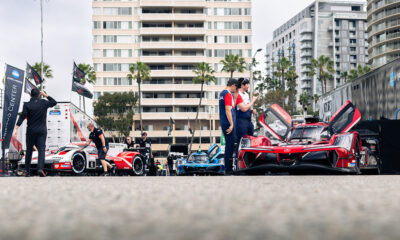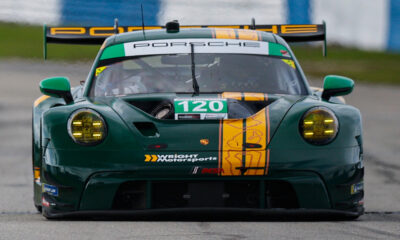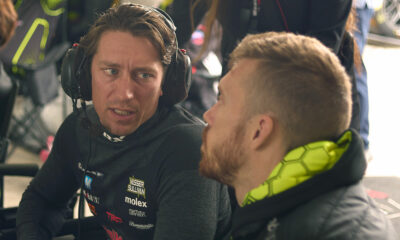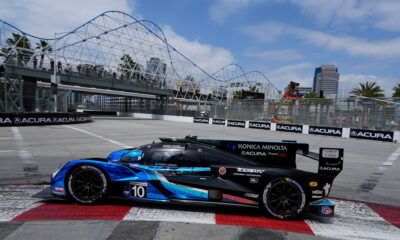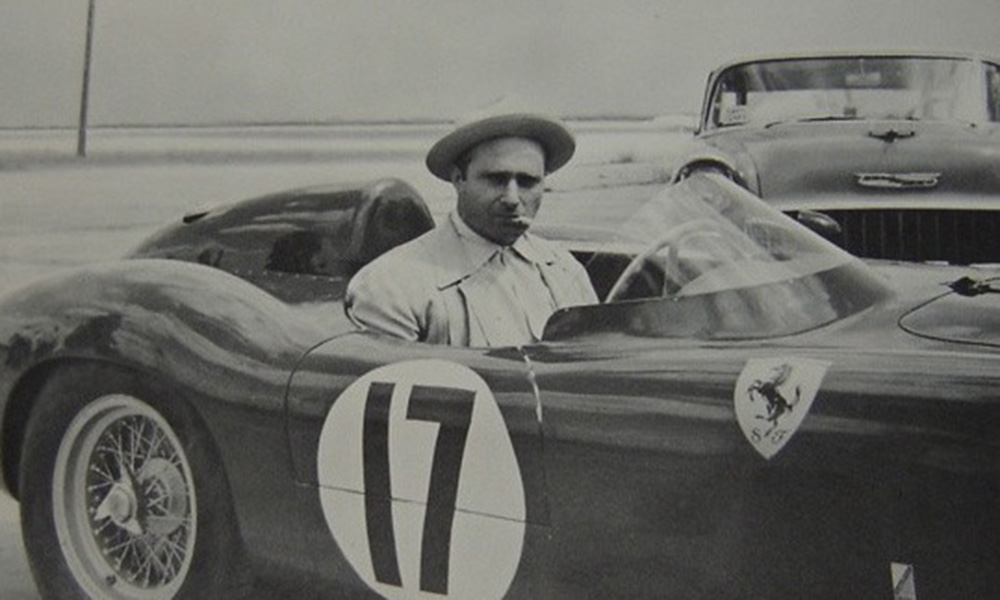
Photo: Sebring Archive
With Formula 1 star Fernando Alonso tackling this year’s Rolex 24 at Daytona, it brings to mind an era when driver crossovers into other disciplines of motorsport were common.
Whether a “one-off” or a serious season-long effort, top drivers crossing over is always of interest to fans and the media.
Certainly the 1950s and most of the 1960s saw F1 drivers competing regularly in sports car racing. Juan Manuel Fangio recorded the only two wins of his career on American soil at Sebring in 1956 nd 1957.
Phil Hill would earn success in both sports car racing and F1, as would Mario Andretti and several others. Drivers such as Jackie Stewart, Stirling Moss, Graham Hill, Bruce McLaren and many others often raced in major sports car endurance classics.
During the 1960s and 70s, drivers such as A.J. Foyt and Mario Andretti competed in just about every form of motorsport possible, including short tracks, but they were a dying breed of drivers willing or able to compete in other disciplines.
More recently, drivers such as Tony Stewart and Robby Gordon competed in a wide variety of events. But the age of motorsport specialization, caused in part by restrictive team and sponsor contracts, conflicting race and testing schedules and other factors, have made crossovers somewhat rare since the 1980s, especially with active F1 drivers.
In North America, NASCAR and Indycar drivers often crossed over into each others’ domain.
Bobby and Donnie Allison, Cale Yarbrough and other NASCAR stars competed in the Indy 500, while both A.J. Foyt and Johnny Rutherford were Indy car regulars who competed often in NASCAR, with both Foyt and Andretti both winning the Daytona 500.
Even today, the Indy-Charlotte double is a crossover that receives a great deal of media overage.
Mark Donohue, sports car and F1 competitor, proved his versatility on ovals by winning the Indy 500 in 1972.
NASCAR drivers became familiar faces at the Rolex 24 during the Grand-Am era.
Jeff Gordon, co-driving the winning Cadillac DPi-V.R last year, was another example of former NASCAR regulars winning in endurance racing at Daytona as a “guest” driver.
Meanwhile, in the American Le Mans Series, some former F1 drivers became regulars, such as J.J. Lehto, Michele Alboreto and Mika Salo.
Alonso’s entry at Daytona, like his Indy 500 run last year, has created a great deal of buzz, but Alonso warns there won’t be many other active F1 drivers in other forms of racing.
He emphasized the time commitment to F1 is so extreme that doing other races is extremely difficult, if not impossible.
For drivers that have left F1, the door is wide open. Nigel Mansel, Juan Pablo Montoya and Jacques Villeneuve have all diversified and posted good results.
While most motorsports fans are familiar with the crossover efforts mentioned above, here are a few somewhat unusual driver crossovers in motorsports history that you may not of heard about, or remember:
*Indy 500 winner Roger Ward entered a midget, yes an Offy-powered Kurtis Kraft midget, in the first USGP F1 race at Sebring in 1959. Hoplessly outclassed, he managed 20 laps before retiring.
*F1 legend Jim Clark raced once in NASCAR. Clark competed in the 1967 American 500 at Rockingham. His scheduled relief driver for the event, if needed, was Jochen Rindt. For the record, Clark ran as high as 12th place before the engine in his Ford failed.
*Hurley Haywood drove in the 1980 Indy 500.
*Fermin Velez, two-time Sebring winner, twice drove in the Indy 500.
*Rolf Stommelen drove in the Talladega 500 in 1971, his only NASCAR start.
*Bob Sweikert – 1955 Indy 500 winner entered his first major sports car race at the 1956 Sebring 12 Hours, and finished third overall in a Jaguar.
*Fireball Roberts drove in various sports car events during his career, including endurance races at Daytona and Sebring.
*NASCAR legend Curtis Turner drove a Studebaker Lark to second place in a supporting race for the first USGP at Sebring in 1959. He also competed at Pikes Peak.
*Paul Goldsmith was truly a versatile racer, winning the Daytona 200 motorcycle race, the NASCAR Grand National event at Daytona in 1958 (the last stock car race held on the beach), and twice finished in the top five in the Indy 500.
*Sports car racing pioneer Sam Collier drove in the first ever stock car race at Daytona in 1936. He guided a Willys 77 through the sand to a 7th place finish, just behind NASCAR founder Bill France.
*Versatile NASCAR driver Ken Schraeder showed up at Sebring in 1994 and co-drove a Consulier Intruder to a surprising 10th overall.
*Stock car oval stars Ricky Rudd and Bill Elliott nearly won the GT class at Sebring in 1986, finishing only seconds behind teammates Scott Pruett and Bruce Jenner, after Jenner “mistakenly” held up a pit board instructing Elliott to pit when he didn’t need to.
*Hollywood stuntman Stan Barrett, best remembered for Land Speed Record attempts, co-drove a Ford Mustang to a very respectable 13th place overall finish at Sebring in 1987 and also drove in several NASCAR Cup events.
*The great Al Holbert not only had success in sports cars. Holbert finished fourth in the Indy 500 and he also competed often in NASCAR.
*Richard Petty is a name not associated with any motorsport other than NASCAR, but “The King” did attempt a switch to drag racing in 1965, which proved to be an ill-fated move. Petty’s Plymouth veered of the track at a drag race in Dallas, Georgia, killing a young spectator and injuring several others.
***One of racing’s most versatile drivers passed away on Sunday. Dan Gurney, a true American racing legend, won in F1, NASCAR, Indy cars and sports car racing. At both Daytona and Sebring, he won as a driver and later as a car owner. Few drivers were able to crossover into other forms of racing as successfully as Gurney.
*Ray Crawford, a name not well known to many of today’s race fans, is a true pioneer of crossover. After flying fighters in WW2, he competed in a variety of motor racing including the Indy 500 five times, the famed Carrera Panamerica in Mexico, and in 1955 he drove the entire 12 Hours of Sebring solo, getting special permission from the sanctioning organization to do so. While George Waltman has been recognized for driving both the Daytona and Sebring enduros solo, Crawford was the first iron man of American endurance racing.
*Walter Rohrl, and other drivers who were successful in major rally competition, deserve recognition as well. Rohrl became very successful in sports car racing for Audi in addition to his stellar WRC career.
*And as Sebring Raceway President Wayne Estes pointed out to me, a crossover disaster became one of Daytona’s greatest stories. Marvin Panch tried driving a Jaguar in a Daytona sport car race, only to crash and get trapped in the burning car. He was rescued by Tiny Lund, who was then selected to replace the injured Panch in the Daytona 500. Lund went on to win the Daytona 500!
Of course, there have many other crossovers in motorsports history. What are some of your favorites?



















